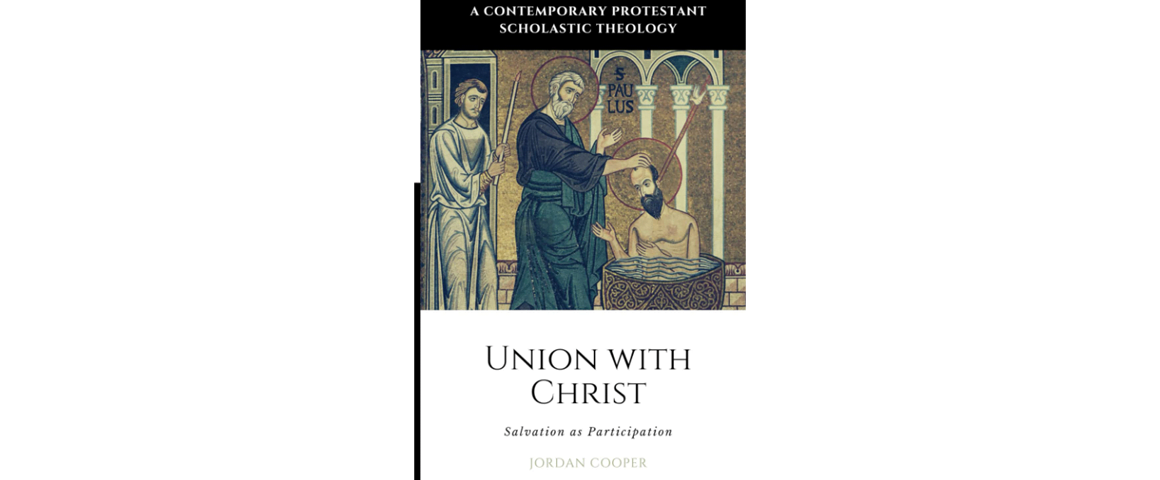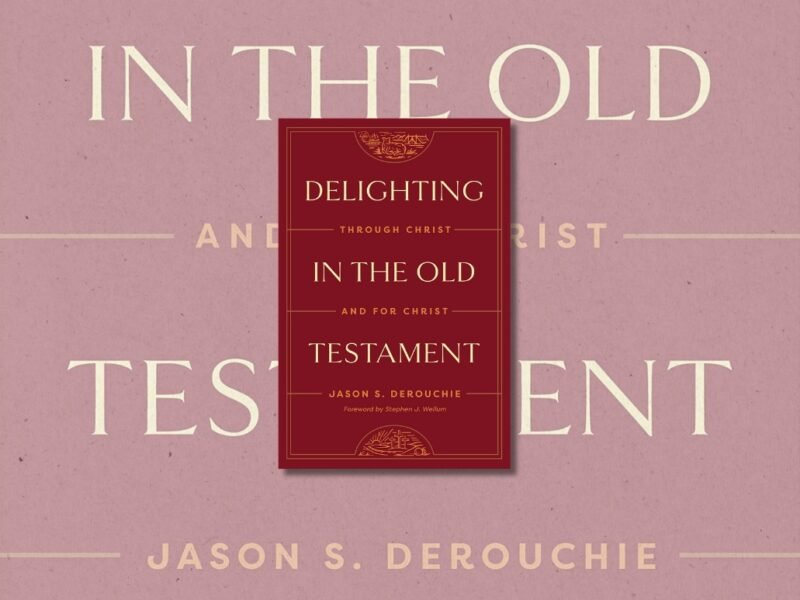Union with Christ: Salvation as Participation. By Jordan Cooper. Just and Sinner Publications, 2021. 246pp. $24.00 (paper).
When I first began to listen to podcasts, Anglican-specific shows were hard to find. This dearth of content from within my own tradition led to my first exposure to confessional Lutheranism, primarily through two shows: Issues, Etc. by Lutheran Public Radio, and Just and Sinner by Pastor Jordan Cooper. Over the years, I have come to greatly admire Dr. Cooper and his work. He is a thoughtful pastor-theologian, a traditionalist without falling into the excesses of the “rad-trad” movement, and a fan of old Star Wars novels (the primary money-sink of my own teens and twenties). I have often said that if I was not an Anglican or if I lived in an area without an Anglican parish, I would likely be a Confessional Lutheran. Cooper’s work has significantly contributed to that conclusion. For his part, he has said on his podcast that if he could not be Lutheran, he would probably be an Anglican. When Cooper reached out to the editors of The North American Anglican to review his latest book, Union with Christ: Salvation as Participation, I immediately volunteered for the task and was given a review copy via Kindle.
Union with Christ is the sixth volume in Cooper’s ongoing series of books, “A Contemporary Protestant Scholastic Theology,” despite being the only volume of the series currently available from the publisher’s website. The other volumes are ongoing or upcoming projects, all of which reflect Cooper’s love for classical Scholasticism. The main goal of Union with Christ is to demonstrate that the doctrine of union with Christ is a central historic theme of confessional Lutheranism, despite widespread neglect since the 19th Century. Union with Christ is a more academic and detailed treatment of the major themes of Cooper’s earlier book, Christification: A Lutheran Approach to Theosis. As Union with Christ is a more academically focused book, many readers would be advised to start with Christification, a book that is over 100 pages shorter than the present work. Starting with Christification, however, is not strictly necessary; those who are more used to academic reading or more familiar with historic Lutheran writers will find Union with Christ sufficiently clear. In fact, I did not read the earlier book first, and had few difficulties with the present volume. That said, it was evident early in my reading that Union with Christ would be much more focused on specifics of Lutheran theology than I had initially expected.
Cooper begins with summarizing the main reason for the neglect of the doctrine of union in contemporary Lutheranism: the rise of Kantian existentialism. That is, since the 19th century, there has been a shift from classical theism, with its emphasis on defining a theological idea or concept “as it is,” to a theological approach that defines the idea or concept based on its impact on humanity. Cooper argues that this philosophical and metaphysical shift has led to a neglect of 400 years of Lutheran theology. He concludes his introduction by defining union with Christ in three distinct ways. He writes:
First is the objective union, wherein Christ unites himself to the entire human race as a kind of collective person. Second, there is the unio fidei formalis (formal union of faith), which is related to the believer’s justification. Third is the unio mystica (mystical union), which is the most common manner in which union with Christ is spoken of throughout the Lutheran tradition.
Over the next two chapters, Cooper traces developments in Lutheran theology with respect to how they relate to the doctrine of union. He specifically focuses on two significant developments: the “Finnish School” rooted in Tuomo Mannermaa’s dialogues with Eastern Orthodoxy in the 1970s, and the “Neo-Kantian Shift,” in which various Lutheran movements react to the rise of theological existentialism. Within these developments, a common approach was to pit Luther against his immediate successors in the period of Lutheran Scholasticism. Cooper firmly rejects this view. That is, Cooper demonstrates a consistency between Luther’s writings and the later Lutheran Confessions with respect to union with Christ. Another approach was to treat the doctrine of union as rooted in the ideas of Andreas Osiander, who saw justification as a result of the mystical union rather than divine imputation. Though Osiander’s views were condemned by the Lutheran Confessions, Cooper demonstrates that this was not a rejection of the mystical union. Rather, it was a rejection of rooting justification in the mystical union.
Chapters four through six address each of the three distinct types of union with Christ in turn. The first type, objective union, is rooted in the Incarnation itself, wherein Christ unites himself to all humanity by assuming a human nature. The chief challenge to a theology of the objective union is a neglect of the Incarnation in much of Protestant thinking in lieu of an almost exclusive emphasis on Christ’s death and resurrection. Additionally, a doctrine of the objective union requires the realism of classical theism as opposed to the nominalism of later thinking.
The second type of union, formal union, is likened to a marriage between Christ and the Christian, in which we receive his righteousness and are justified in him. Formal union is not addressed extensively in Lutheran scholasticism, though it is implied in several key places. More commonly, this kind of union is found in Reformed thought, often under the term “federal union” or the “great exchange.” It is in chapter five that Cooper interacts the most with non-Lutheran sources as he surveys contemporary Reformed thinkers on federal union.
Finally, the third type of union, the mystical union, is the topic of the sixth chapter. This is the most common type of union addressed in Lutheran scholasticism, and is rooted in the transformative indwelling of Christ in the believer. That is, mystical union logically follows and flows from justification. Furthermore, mystical union precedes and leads to sanctification. Because we have been justified (declared righteous) in Christ, he is mystically united to us, transforming us more and more into his likeness, which results in our holiness. While justification results in imputed righteousness, the mystical union results in infused righteousness. These categories cannot be confused; indeed Osiander was condemned for such confusion.
Chapter seven concludes the book with a summary of the major ideas of the previous chapters, followed by a practical application of the topic of union for Lutheran mysticism. In the practical application, Cooper insists that the doctrine of union provides for a scriptural and Lutheran approach to mysticism that does not degenerate into “enthusiasm.” That is, justification and assurance of salvation are never to be based on the “internal witness,” but are objectively based on Christ’s work given to the believer in Word and Sacrament. This is contra the medieval mystical tradition as well as the Eastern Orthodox tradition of theosis. Nevertheless, union with Christ provides a basis for an experiential and transformational element of the faith, albeit not an experiential form of justification.
As an Anglican of High Church sensibilities, the biggest challenge to this book was its Lutheran focus. With a few exceptions, I was not familiar with the Lutheran writers surveyed in the book. Indeed, any familiarity with the “few exceptions” was due to previous podcasting and writing by Cooper and the contributors to Issues, Etc. Nevertheless, Cooper’s analysis and synthesis of these very Lutheran concepts are presented in such a way that I could easily translate them into our own context as a Sacramental and Reformational church.
In particular, it was helpful to see how Christ’s righteousness is not only imputed in justification, but is also infused through the mystical union on the journey toward sanctification. A mysticism without enthusiasm can indeed be fostered by Prayer Book spirituality. In particular, the Prayer Book’s spiritual disciplines of Scripture Lessons and Psalms in the context of prayer through the Daily Offices, frequent reception of Holy Communion, and meditation on the lives of our spiritual forefathers through the calendar of Saints’ Days helps to immerse us in the Word and Sacrament, which fosters a closer mystical union with Christ.
Furthermore, our Reformed heritage has made the formal union with Christ more typical to historic Anglican thinking than it has to much of Lutheranism, and the incarnational focus of the objective union fits well with our history within the establishment, ideally acting as something of a chaplain to greater society. While I initially wondered why Cooper had reached out to an Anglican publication to review a book so focused on Lutheranism, the ideas behind Union with Christ: Salvation as Participation are just as necessary for a robust Anglican spirituality as they are to a Lutheran one.







'Not Just for Lutherans: A Review of Jordan Cooper’s “Union with Christ”' has no comments
Be the first to comment this post!